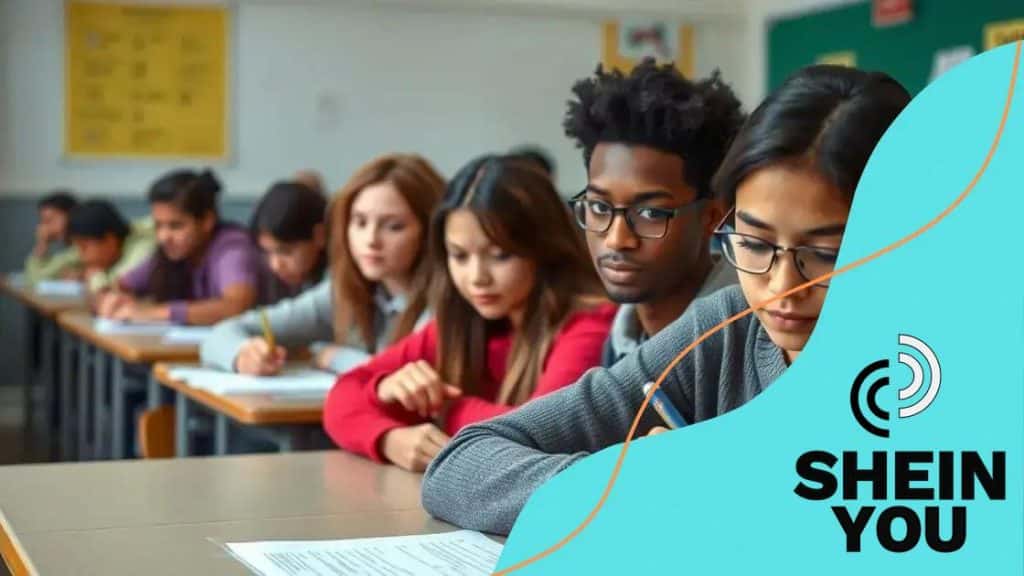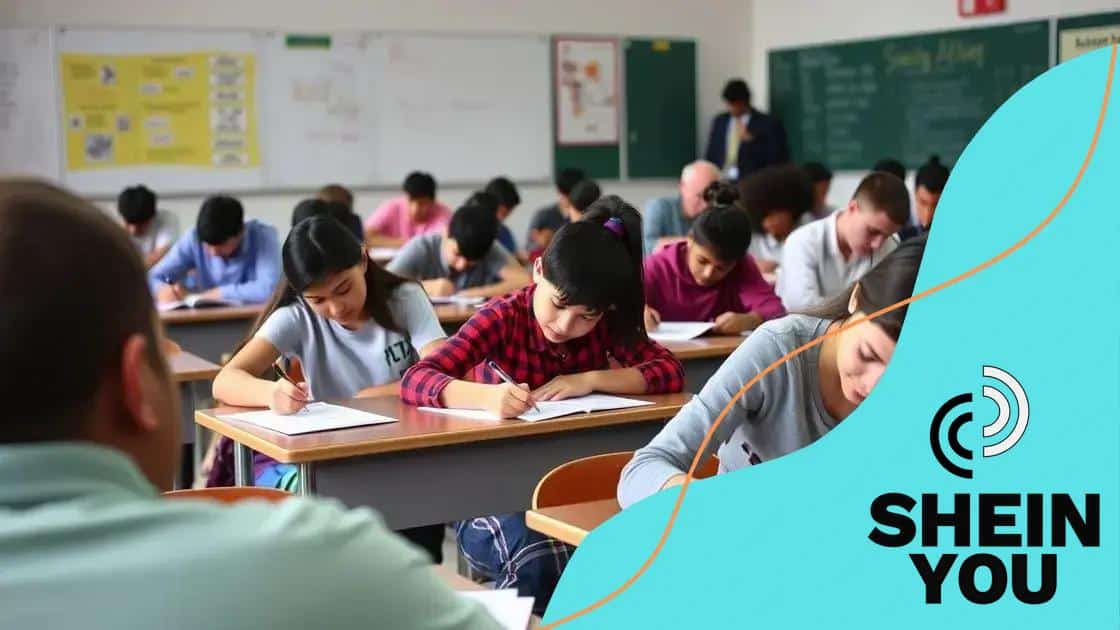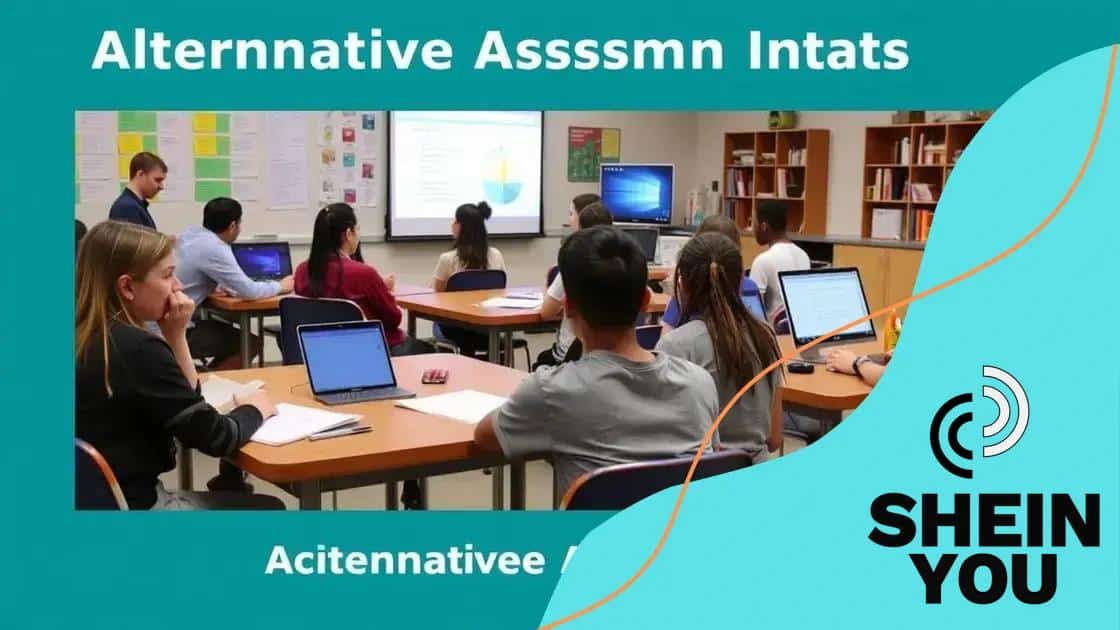The debate over standardized testing in public schools

Advertisements
The debate over standardized testing in public schools focuses on its effectiveness, fairness, and potential alternatives, emphasizing the need for assessment methods that promote critical thinking and creativity while accommodating diverse student needs.
The debate over standardized testing in public schools has been a hot topic among educators, parents, and policymakers alike. As you dive into this discussion, you might wonder: are these tests truly measuring student success or creating more pressure?
Advertisements
Understanding standardized testing: A brief history
Understanding standardized testing is essential to comprehend its impact on education today. The roots of these assessments stretch back many decades, with their development influenced by various educational reforms.
Initially, standardized tests were designed to measure student achievement and support educational decisions. In the early 20th century, pioneers like Alfred Binet, who created the first intelligence test, laid the groundwork for future assessments. These tests aimed to identify students needing extra support while ensuring consistent educational standards.
The evolution of testing
Over the years, the approach to standardized testing has changed significantly. In the 1960s and 1970s, the emphasis shifted towards creating tests that compared student performance across different regions. This allowed educators to assess how well students were learning in relation to their peers.
Advertisements
- Advent of norm-referenced tests
- Introduction of criterion-referenced assessments
- Increased emphasis on accountability measures
In the 2000s, the No Child Left Behind Act further transformed the landscape of standardized testing. This legislation mandated annual testing in reading and math for students in grades 3-8 and once in high school. The goal was to ensure all students, regardless of background, receive a quality education.
Modern day implications
Today, standardized testing continues to be a topic of fierce debate among educators, parents, and policymakers. Critics argue that these tests often do not accurately reflect a student’s knowledge or abilities. They highlight concerns about stress, teaching to the test, and the narrowing of the curriculum.
Supporters, however, believe that standardized assessments provide valuable data to improve educational outcomes. They argue that these tests hold schools accountable for student performance while offering insights into areas needing improvement. As discussions evolve, it remains crucial to examine the ongoing impact of standardized testing on education.
Pros of standardized testing in public schools

There are several pros of standardized testing in public schools that supporters frequently highlight. One significant advantage is the ability to measure student performance consistently across various demographics. Standardized tests provide a uniform way to compare students from different backgrounds and schools, ensuring that everyone is measured by the same yardstick.
Furthermore, these tests can help identify areas where schools need to improve. By analyzing the results, educators can pinpoint specific subjects or skills where students may struggle. This data-driven approach allows schools to develop targeted interventions.
Accountability for schools
Standardized testing also holds schools accountable for their students’ learning outcomes. Schools must demonstrate that they are providing a quality education. When student performance is publicly reported, it encourages schools to focus on raising achievement levels.
- Encourages consistent teaching standards
- Promotes a focus on achievement and improvement
- Provides data for policymakers and educators
Another benefit is that standardized tests prepare students for future assessments and the realities of academic pressure. Many higher education institutions require standardized test scores for college admissions. When students become accustomed to taking these tests in high school, they may feel more prepared for similar assessments in college.
Fostering competition
Additionally, standardized testing creates a competitive environment among schools. This competition can lead to improvements in educational quality as institutions strive to perform better. When schools know they are being compared based on test results, they become motivated to enhance their teaching methods and learning resources.
In conclusion, while there are valid criticisms of standardized testing, recognizing its potential benefits is crucial. The pros of standardized testing can play a significant role in fostering accountability, improving educational quality, and preparing students for their academic futures.
Cons of standardized testing and its implications
While there are benefits, there are also significant cons of standardized testing that deserve attention. One major concern is that these tests often fail to account for the diverse backgrounds of students. Factors such as socioeconomic status, language barriers, and learning disabilities can heavily influence performance on standardized assessments.
The pressure associated with standardized testing can lead to anxiety among students. High-stakes testing environments create stress that may affect a student’s performance. This anxiety can discourage students from performing their best, skewing the results and not truly reflecting their knowledge.
Narrowing of the curriculum
Another significant issue is the narrowing of the curriculum. Schools may focus only on subjects tested, sacrificing a well-rounded education. This approach limits the exposure students receive to various subjects, including art, music, and even some sciences. It can also lead to teaching methods that prioritize memorization over critical thinking skills.
- Reduction in creative subjects
- Teaching to the test practices
- Limited development of critical thinking skills
Moreover, the reliance on standardized testing can create inequalities within the education system. Schools in lower-income areas may not have the same resources as those in affluent neighborhoods. As a result, students in these schools may perform poorly on standardized tests, leading to negative perceptions about their abilities and the effectiveness of their teachers.
Questionable validity
Critics also argue that standardized tests do not accurately measure a student’s potential. These assessments often assess how well students can take tests rather than their actual understanding of the material. This can be particularly concerning for students who may excel in hands-on or practical learning environments.
In summary, while standardized testing aims to create accountability and be a tool for measuring educational success, the cons of standardized testing raise essential questions about its effectiveness and fairness. Understanding these implications is crucial for educators, policymakers, and parents alike.
Alternatives to standardized testing

As educational systems evolve, many educators and policymakers are exploring alternatives to standardized testing. These alternatives aim to provide a more comprehensive view of student learning while addressing some of the limitations of traditional testing.
One widely discussed approach is the use of portfolio assessments. Portfolios allow students to showcase their work over time, including projects, essays, and other assignments. This method provides a more holistic understanding of a student’s abilities and progress. Rather than a single test score, portfolios reflect ongoing learning and improvement.
Performance-based assessments
Another alternative is performance-based assessments, where students demonstrate their knowledge through real-world tasks. For example, instead of taking a written exam, students might present a project or participate in a simulation. These assessments enable students to apply their learning in practical situations, helping them develop critical skills.
- Encourages creativity and problem-solving
- Measures skills relevant to future careers
- Promotes teamwork and collaboration
Additionally, teachers can utilize formative assessments, which are conducted throughout the learning process. These assessments provide immediate feedback, allowing educators to adjust their teaching strategies to meet students’ needs. In this way, learning becomes a more collaborative effort between students and teachers.
Adaptive learning technologies
Advancements in technology have also led to innovative methods for assessing student learning. Adaptive learning technologies can customize educational experiences based on individual student performance. By using data analytics, these tools can identify strengths and weaknesses, ensuring that each student receives tailored instruction.
Finally, self-assessment and peer-assessment strategies empower students to take charge of their own learning. By evaluating their work and the work of peers, students can develop critical thinking and reflective skills that are essential for lifelong learning. These methods encourage students to set personal goals and understand their learning processes better.
Overall, while standardized testing has its place, exploring these alternatives to standardized testing can lead to a more equitable and effective education system. These innovative approaches promote a deeper understanding of student learning, better preparing them for the future.
The future of assessment in schools
The future of assessment in schools is evolving rapidly, driven by advancements in technology and changes in educational philosophy. As we rethink traditional models, educators are increasingly focusing on personalized learning and holistic approaches to student assessment.
One exciting trend is the incorporation of technology-based assessments. These platforms can provide instant feedback, allowing students to understand their strengths and weaknesses immediately. This real-time data can help teachers customize their instruction to meet individual student needs.
Emphasis on skills over memorization
Another shift is moving away from rote memorization towards assessing critical thinking, creativity, and problem-solving skills. This approach reflects the demands of the modern workforce, where collaboration and innovation are essential. Schools are developing new methods to measure these skills, such as project-based learning and collaborative assessments.
- Integrating real-world problem solving
- Using performance-based evaluations
- Encouraging creativity and collaboration
Furthermore, formative assessments are gaining prominence. These assessments happen during the learning process rather than at the end. They allow for continuous feedback and adjustments, enabling students to grow and learn more effectively. This fosters a growth mindset and encourages students to take ownership of their learning.
The role of social-emotional learning
In addition, there is an increasing focus on social-emotional learning (SEL) in assessments. Schools recognize the importance of emotional intelligence and interpersonal skills. Evaluating these areas can lead to a more well-rounded education, helping students develop resilience and empathy.
As educational leaders embrace these changes, the future of assessment appears bright. The shift toward more meaningful and comprehensive evaluation methods promises to enhance student engagement and learning outcomes. By redefining how we assess student progress, we can better prepare students for success in a rapidly changing world.
FAQ – Frequently Asked Questions about the Future of Assessment in Schools
What are the key benefits of performance-based assessments?
Performance-based assessments allow students to demonstrate their knowledge through practical tasks, encouraging critical thinking and creativity.
How do technology-based assessments improve learning?
Technology-based assessments provide real-time feedback, helping students identify their strengths and weaknesses quickly.
What role does social-emotional learning play in assessments?
Social-emotional learning assessments focus on developing skills like empathy and resilience, which are essential for student success.
Why is portfolio assessment considered beneficial?
Portfolio assessments showcase a student’s growth over time, offering a more comprehensive view of their skills and learning journey.